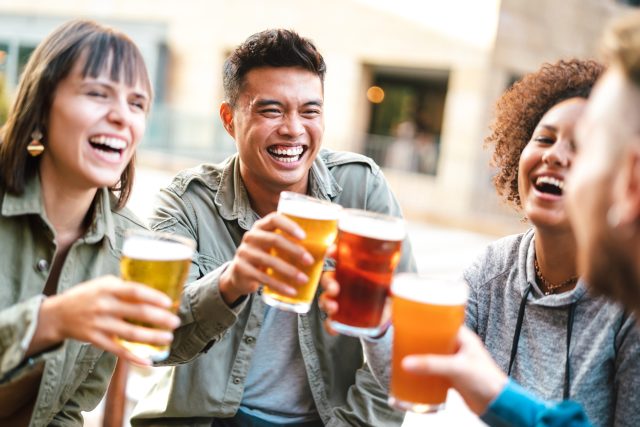This website uses cookies so that we can provide you with the best user experience possible. Cookie information is stored in your browser and performs functions such as recognising you when you return to our website and helping our team to understand which sections of the website you find most interesting and useful.
How does Gen Z choose what to drink?
Generation Z’s drinking habits present something of a conundrum for drinks brands. Here are some of the key ways that companies can market their products to this younger demographic, according to research from CGA by NIQ.

“Gen Z is tricky – we don’t know what they want, or how they consume drinks. Maybe they don’t even know what they want.” This is what Caroline Benetti, who heads up export communication at Conseil Interprofessionnel des Vins de Provence (CIVP), told the drinks business when discussing a new campaign for Provence rosé aimed at millennials.
Indeed, the question of what members of Gen Z, also known as ‘zoomers’, actually want to drink is one that is only going to become more pertinent as more of those in that bracket (born between 1995 and 2021) reach the age where they can go out and drink alcohol.
Research from CGA by NIQ’s Charlie Mitchell, as presented at this month’s Bar Convent Berlin, suggests that there are in fact several key points that drinks brands need to consider when trying to market their products to these young potential consumers.
The first one concerns the huge potential of the on-trade. According to the data from CGA by NIQ, 70% of Gen Z members (of drinking age) visit the on-premise at least weekly, 9% above the average for all age groups. If a drinks brand wishes to reach that particular demographic, then pubs and bars might be the best point of focus.
This ties in with another point the research revealed: Gen Z are after ‘experiences’. Whereas 50% of all consumers say that they will visit a venue that offers an ‘experience’, be it live music or screening sport, 54% of Generation Z are more likely to gravitate venues with these kind of offerings. Some drinks brands are already using unusual experiences to generate publicity. For example, for Halloween The Kraken Rum has opened a bar where the price you pay is determined by your pulse rate.
The research highlighted that drinks brands can also promote themselves to those in the 18-28 age range using two phenomena that very much go hand in hand: celebrities and social media.
There is no shortage of celebrity-backed drinks, from Kylie Minogue’s chart-topping rosé to Breaking Bad stars Bryan Cranston and Aaron Paul’s mezcal, and having a famous face behind the brand clearly makes a difference among zoomers, with 58% saying that they are likely to be influenced into purchasing food or drink if it has been endorsed by a well-known person.
As for social media, how something looks really does matter – 83% of Gen Z says they have purchased food or drink because they saw it on social media platforms like Instagram and TikTok, 17% above the average. Last year’s explosion of interest in the Negroni Sbagliato after a clip of House of the Dragon actor Emma D’Arcy (incorrectly) saying the cocktail went viral on TikTok is a testament to the power when social media and celebrity combine, even if the original intention was not to promote the drink in question.
Indeed, it might be suggested that Gen Z’s predilection for ‘experiences’ is, however one feels about this, because they wish to create content for their own social media feeds.
Of course, the crucial question of what young people want to drink still remains. Perhaps unsurprisingly, given the explosion of RTDs on the market, Gen Z has a taste for cocktails, especially those that are sweet and, contrary to beliefs that it is a generation of teetotallers, high in alcohol. The Mojito is the most popular choice, followed by the Margarita, Piña Colada and Sex on the Beach. 49% of Generation Z cocktail consumers say that they often base their ordering choices on what looks good on social media, again circling back to the previous point about visits to bars becoming ‘content creation’ opportunities.
However, while a member Generation Z is 9% more likely than the average consumer to order a cocktail, they are 13% less likely to order a beer. Although no data for wine is provided by CGA by NIQ, in traditional wine producing countries, such as France (-15%), Italy (-7%) and Germany (-22%), wine consumption is in decline across the board – a trend that can at least be partly attributed a lack of interest among younger drinkers in the traditional beverage.
It’s important to remember that Generation Z is not homogenous. As an involuntary member of it myself, I have heard anecdotes about Bordeaux becoming trendy among the young restaurant goers of East London, and I have seen how Diageo-owned juggernaut Guinness has become a loosely ‘anti-establishment’ pint. Furthermore, today’s Gen Z Mojito sippers could well become tomorrow’s Barolo buyers, for example – trends change, but so do people as they age.
Related news
Stone Brewing to cease all international exports

